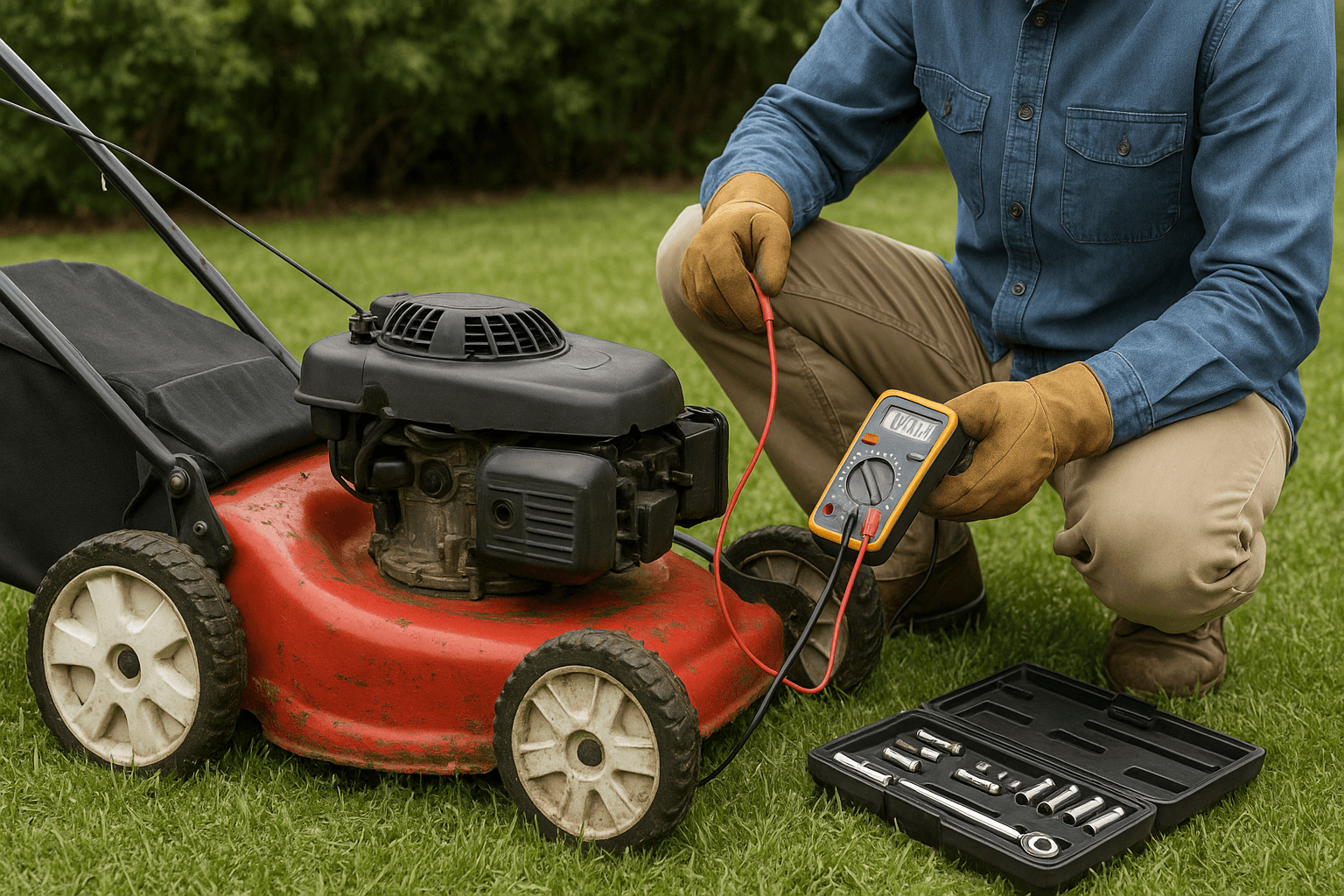Repair help
Why Does My Lawn Mower Run Rough? How to Fix It
AZparts Team
Updated on July 24, 2025
12 min read
When your lawn mower runs rough, it can turn a simple job into a frustrating chore. From clogged filters to worn spark plugs, small issues can lead to big problems if left unchecked. In this guide, AZParts will help you diagnose the cause and get your mower running smoothly again with high-quality replacement parts and easy-to-follow repair guides.

1. Symptoms to Watch For: Lawn Mower Runs Rough
Recognizing the early warning signs of a rough-running lawn mower can help you avoid more extensive damage and costly repairs. Below are the most common symptoms to look out for:
1.1 Rough Idle
When your mower’s engine is running but not moving, it should idle steadily. A rough idle feels shaky, inconsistent, or uneven and often points to issues like a dirty carburetor, clogged air filter, or problems with fuel combustion. You may notice the engine revving slightly up and down or making irregular noises during idle.
1.2 Engine Surging or Sputtering
Engine surging refers to a repeated rise and fall in engine speed without any throttle adjustment. This inconsistent performance is typically caused by an erratic air-fuel mixture. Sputtering, on the other hand, sounds like coughing or popping and usually indicates incomplete combustion, often due to a clogged fuel line, dirty carburetor, or contaminated gasoline.
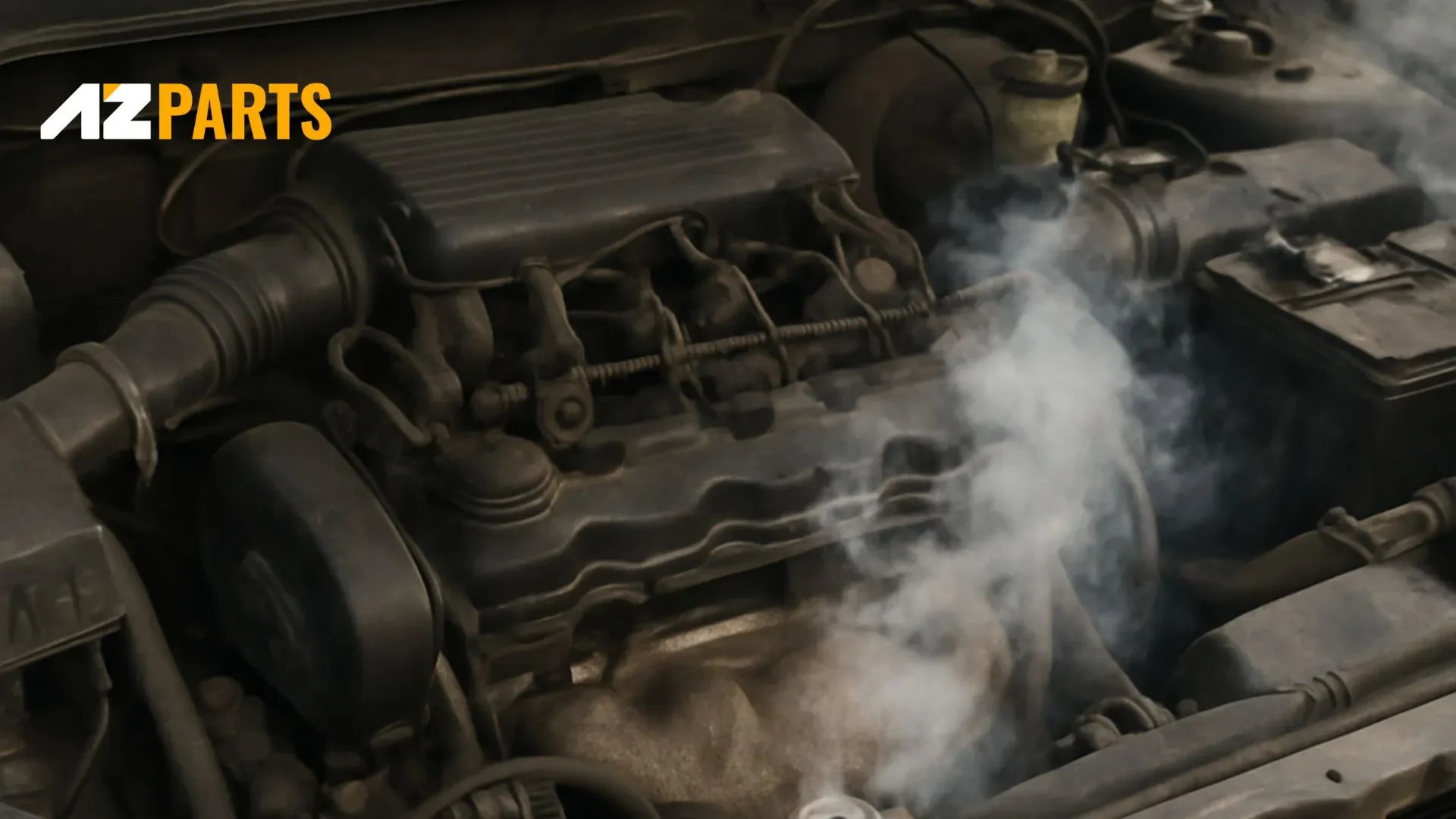
1.3 Stalling During Use
If your mower runs fine at startup but stalls after a few minutes of operation, it likely has an issue with fuel delivery, airflow, or ignition. A blocked fuel filter, faulty ignition coil, or overheating engine could be the culprit. Frequent stalling can be dangerous during mowing and should be addressed promptly.
1.4 Difficulty Starting
A mower that’s hard to start, especially if it requires multiple pulls or extended cranking, is often suffering from dirty or worn-out components. Possible causes include a fouled spark plug, stale or low-quality fuel, a clogged carburetor, or insufficient oil. In some cases, old or faulty ignition parts may also make starting unreliable.
2. Common Causes of a Rough-Running Lawn Mower
Many different issues can cause your lawn mower’s engine to run poorly. Here are the most frequent causes explained in simple terms:
2.1 Dirty or Clogged Air Filter
The air filter’s job is to keep dust, grass clippings, and dirt out of the engine. Over time, it gets filled with these particles, which block the air from flowing properly. When the engine doesn’t get enough air, the fuel doesn’t burn correctly, making the mower run rough or stall.
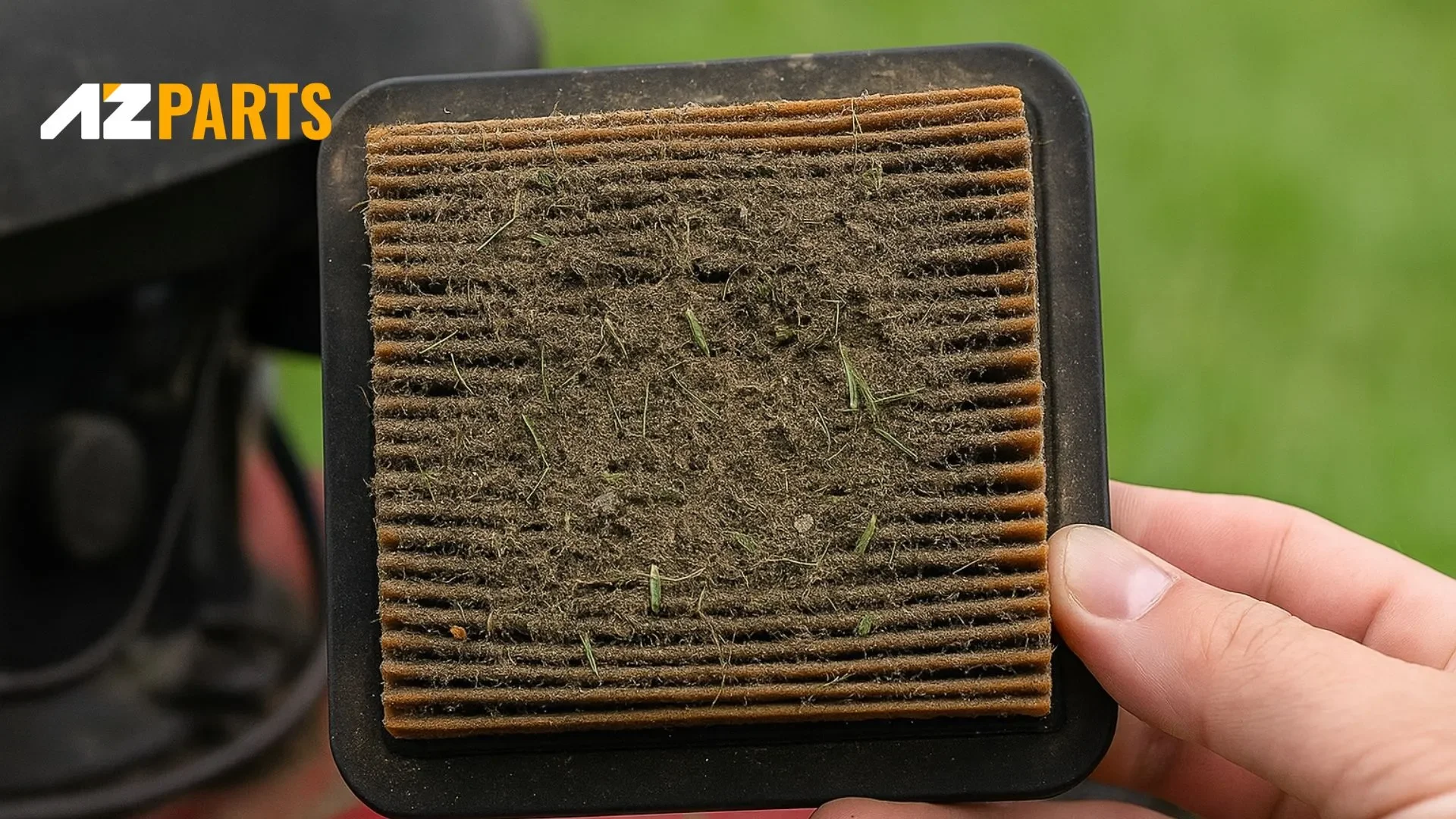
2.2 Old or Contaminated Fuel
Gasoline breaks down if it sits in the mower too long, especially fuel with ethanol that attracts water. Old fuel can form sticky deposits inside the fuel system, causing the engine to sputter, hesitate, or have trouble starting.
2.3 Obstructed Fuel Tank Vent
The fuel tank needs to “breathe” so air can replace the fuel as it’s used. If the small vent in the fuel cap is blocked by dirt or debris, a vacuum forms inside the tank. This stops fuel from flowing smoothly to the engine and can cause rough running or stalling.
2.4 Clogged Fuel Filter
The fuel filter stops dirt from getting into the engine through the fuel lines. If the filter is clogged, it reduces the amount of fuel reaching the engine. This makes the mower run unevenly or lose power.
2.5 Faulty or Fouled Spark Plug
The spark plug creates the spark needed to ignite the fuel-air mixture. If it’s dirty, worn out, or the gap is incorrect, the spark will be weak or irregular. This results in poor engine performance and rough running.
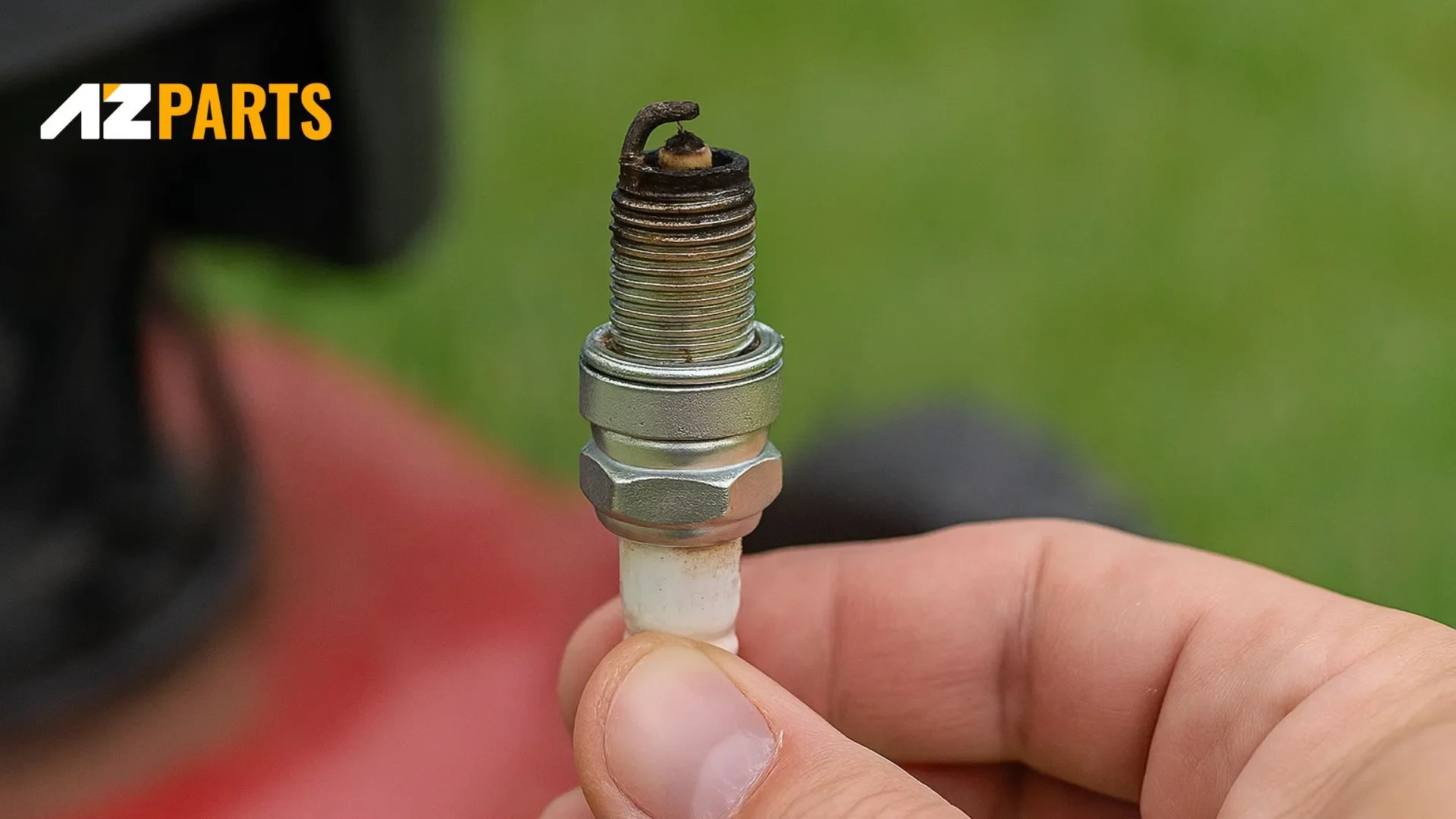
2.6 Carburetor Issues
The carburetor mixes the air and fuel in the right ratio before it reaches the engine. If the carburetor is dirty, worn, or not adjusted correctly, the fuel-air mixture will be off. This causes the engine to run roughly, stall, or surge unexpectedly.
3. Solutions: How to Fix a Rough-Running Lawn Mower
Follow these steps to diagnose and fix the problem. Most of these can be done at home with basic tools.
3.1 Clean or Replace the Air Filter
A clogged or damaged air filter is one of the most common reasons a lawn mower runs roughly. Follow these steps to clean or replace it:
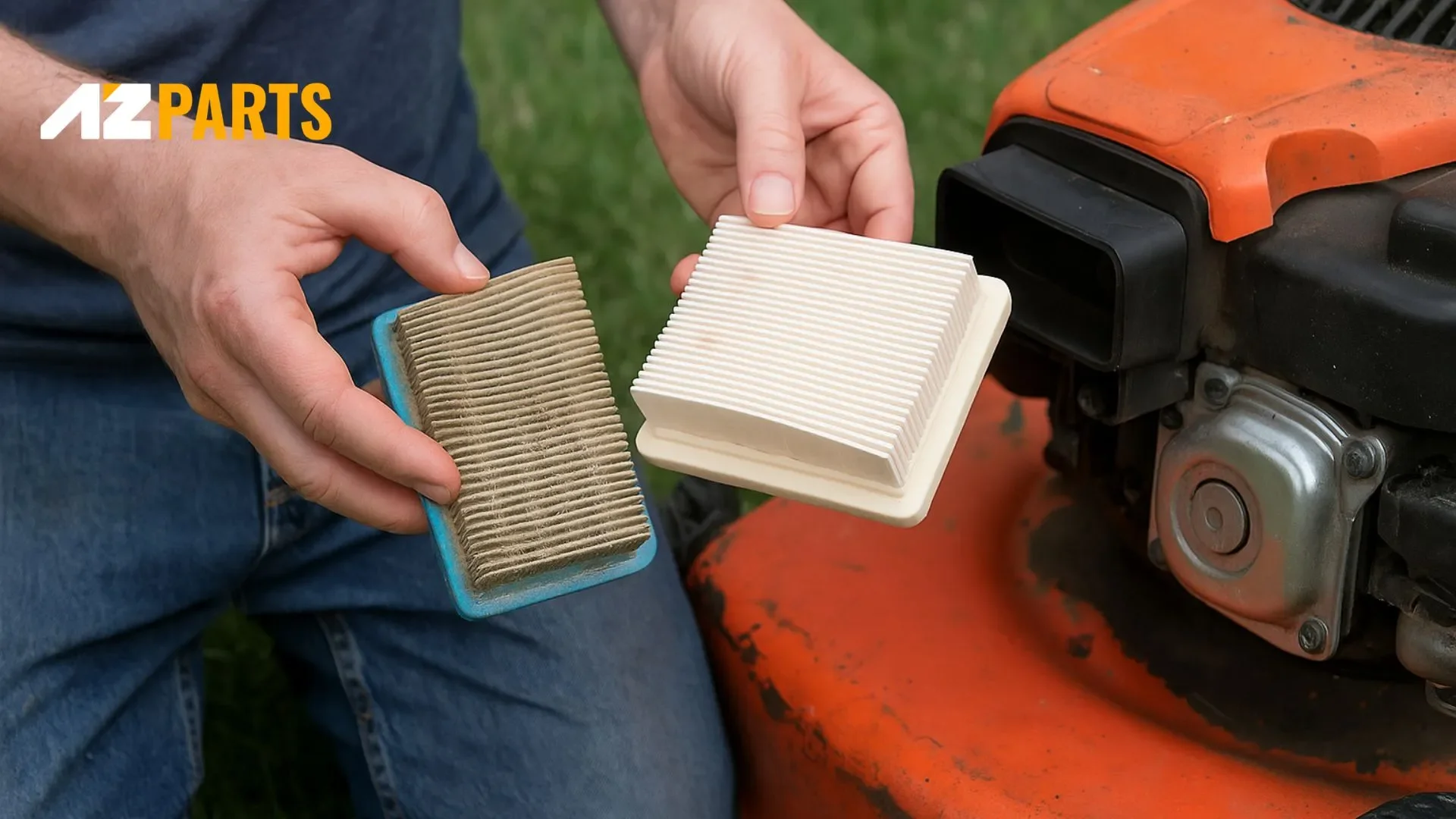
Step 1: Locate the Air Filter Housing
Find the air filter housing, usually positioned on the side of the engine. It’s typically covered by a plastic or metal lid labeled “Air Filter” or secured with clips or screws.
Step 2: Remove the Air Filter Cover
Use your hands or a screwdriver to remove the cover. Be careful not to damage the clips or surrounding parts.
Step 3: Take Out and Inspect the Air Filter
Carefully pull out the air filter and examine it.
- If it’s dusty but intact, tap it gently on a hard surface to remove loose debris.
- You can also use compressed air to blow it clean from the inside out (never from outside in).
- If the filter is dark, oily, wet, torn, or excessively dirty, it must be replaced.
Step 4: Replace the Filter (if needed)
If a replacement is necessary, buy the correct filter type for your mower model (check the owner’s manual if unsure). Insert the new lawn mower air filter in the same position as the old one.
Step 5: Reinstall the Air Filter and Cover
Put the cleaned or new filter back into the housing. Make sure it fits snugly and evenly. Then close the cover and fasten any clips or screws securely.
3.2 Drain Old Gas and Refill with Fresh Fuel
Old or stale gasoline can cause a lawn mower to run rough, misfire, or refuse to start. Fuel that has been sitting for more than 30 days may degrade and lose its effectiveness, especially if it contains ethanol. Follow these steps to drain and replace the fuel safely:

Step 1: Prepare and Drain Old Gasoline
Ensure the engine is off and completely cool. Work outdoors in a well-ventilated area away from flames or sparks. Wear gloves if desired. Use a siphon pump or the mower’s drain plug (if available) to remove old fuel into a safe container.
Step 2: Dispose of Old Fuel Properly
Never pour gasoline on the ground, into a drain, or into trash. Take it to a local hazardous waste disposal site or recycling center that accepts gasoline.
Step 3: Refill with Fresh Gasoline
Refill the tank with fresh, clean gasoline. If available, use ethanol-free fuel (labeled E0), which lasts longer and performs better in small engines. Avoid using fuel that contains more than 10% ethanol (E10).
Step 4: Add Fuel Stabilizer (Optional)
If your mower will be stored for more than a month, mix in a fuel stabilizer as directed on the label. This helps prevent fuel degradation, carburetor clogging, and starting problems later. Besides, consider replacing aging components such as lawn mower fuel filter & fuel line and lawn mower fuel shut-off valves with new ones designed for long-term reliability.
3.3 Check and Clear the Fuel Tank Vent
A clogged fuel tank vent can create a vacuum that restricts fuel flow, causing the mower to run rough or stall. The vent lets air into the tank as fuel is used—if blocked, it needs to be inspected and cleared.

Step 1: Inspect and Clear the Fuel Tank Vent
Loosen or remove the fuel cap and listen for a “whoosh” sound—this may indicate a vacuum from a blocked vent. Examine the vent hole, usually on or near the fuel cap, and use a pin or compressed air to gently clear any obstructions like dirt or crusted fuel.
Step 2: Test and Clean Again If Needed
After cleaning, reinstall the fuel cap loosely and start the mower to see if performance improves. If the issue persists and the cap is not visibly damaged but still seems clogged, clean it again more thoroughly.
Step 3: Replace the Fuel Cap (If Necessary)
If the vent is built into the fuel cap and cannot be cleared, or if it’s visibly cracked or damaged, replace the entire cap with a compatible new one from the manufacturer.
3.4 Replace the Fuel Filter
Over time, the fuel filter can become clogged with dirt or debris, restricting fuel flow and causing your lawn mower to run rough or stall. Replacing it regularly helps maintain clean fuel delivery to the engine.
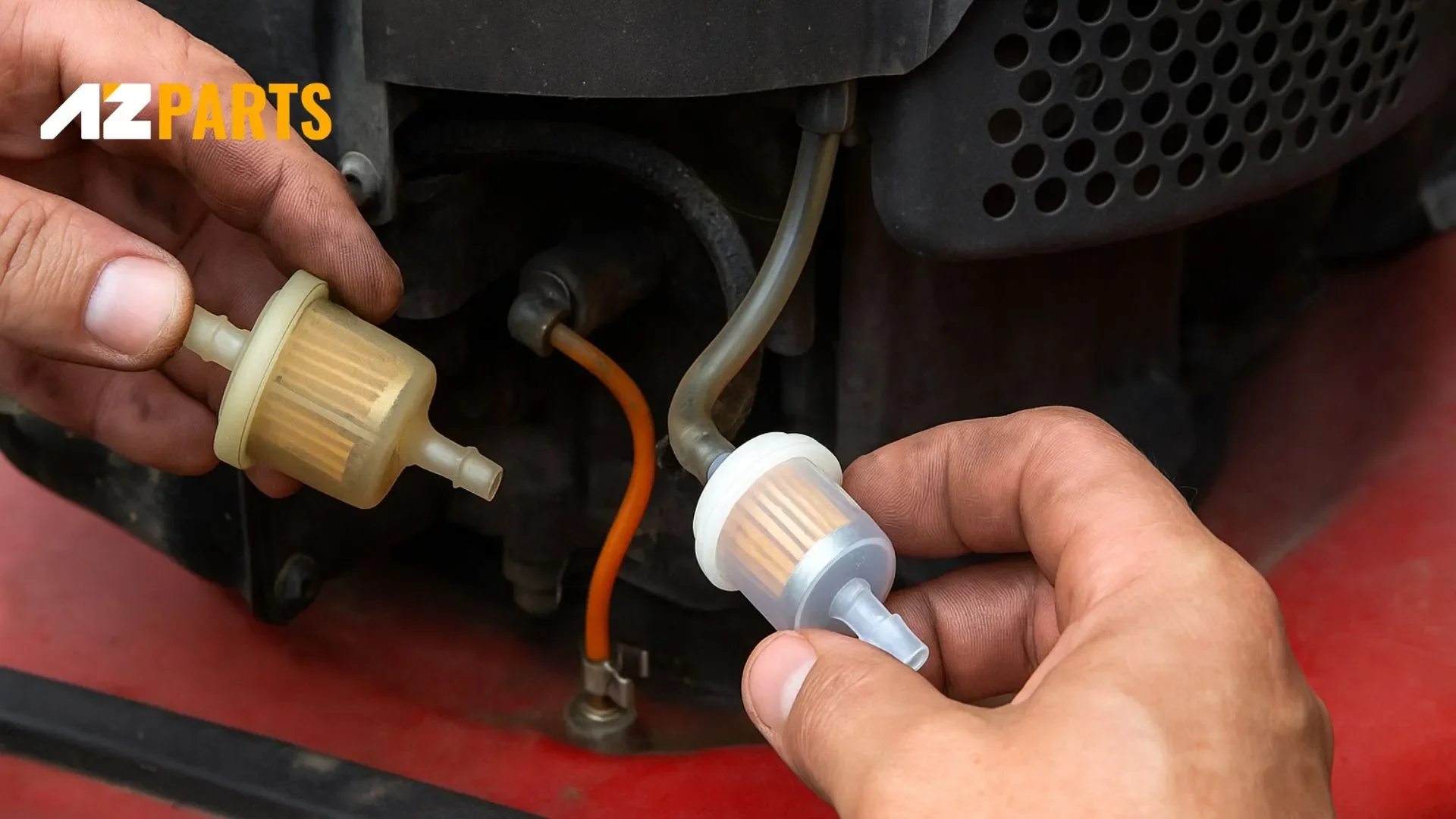
Step 1: Locate the Fuel Filter
Find the inline fuel filter, which is usually located between the fuel tank and the carburetor. It’s typically a small plastic or metal cylinder connected to the fuel line.
Step 2: Shut Off Fuel Flow
To prevent fuel from spilling during the replacement process, begin by turning off the fuel shut-off valve if your lawn mower is equipped with one. If your mower doesn’t have a shut-off valve, use fuel line clamps or locking pliers with padding to clamp the fuel line on both sides of the filter. This ensures that no fuel leaks out while you work on the system.
Step 3: Remove the Old Fuel Filter
Use pliers to carefully loosen the clamps on both ends of the fuel filter, then gently slide the fuel lines off. Be cautious during this step, as a small amount of residual fuel may drip out. Once removed, inspect the old filter closely. If it appears dark, discolored, or visibly clogged with debris, it should be replaced to ensure proper fuel flow and engine performance.
Step 4: Install the New Fuel Filter
Check the direction of flow marked on the new filter (an arrow usually shows fuel direction toward the carburetor).
- Attach the filter with the arrow pointing toward the engine.
- Push the fuel lines onto the new filter’s fittings and secure them with the clamps.
Step 5: Turn Fuel Back On and Test
Reopen the fuel valve or unclamp the fuel line. Start the mower and let it run for a few minutes to ensure smooth fuel flow and proper operation.
Why This Matters
A clean fuel filter ensures steady fuel delivery to the carburetor. Replacing it prevents engine hesitation, uneven running, and hard starting—especially in older mowers or those used frequently.
3.5 Inspect and Replace Spark Plug if Needed
A dirty or worn-out spark plug can cause misfiring, hard starting, or uneven engine performance. Inspecting and maintaining the spark plug ensures consistent ignition and smooth operation.

Step 1: Disconnect and Remove the Spark Plug
Locate the spark plug on the engine and disconnect the spark plug wire by pulling off the rubber boot. Then use a spark plug socket wrench to remove the plug by turning it counterclockwise. Be cautious to avoid cracking it.
Step 2: Inspect the Spark Plug
Examine the spark plug for the following signs:
- Black soot: Indicates carbon fouling from a rich fuel mixture or dirty air filter.
- Oily residue: May signal oil leaking into the combustion chamber.
- Worn or damaged electrodes: Look for broken, burned, or excessively worn tips.
Step 3: Clean or Replace
- If the plug is dirty but intact, clean it using a wire brush or spark plug cleaner.
- Use a feeler gauge to check the gap between electrodes. Adjust it to match the specification in your mower’s manual (commonly around 0.030 inches or 0.76 mm).
- If the plug is cracked, corroded, or worn, replace it with a new spark plug that matches the mower’s recommended type.
Step 4: Reinstall the Spark Plug
Thread the cleaned or new spark plug into the engine by hand to avoid cross-threading. Then tighten it securely with the socket wrench, but avoid overtightening.
Step 5: Reconnect the Spark Plug Wire
Push the spark plug wire boot firmly back onto the spark plug until it clicks into place.
3.6 Clean or Adjust the Carburetor
For basic cleaning: If your lawn mower runs rough or stalls during use, the lawn mower carburetor may be dirty or partially clogged. For a basic cleaning, first ensure the engine is off and cool. Spray carburetor cleaner directly into the air intake or into the carburetor bowl to dissolve built-up fuel residue and grime. Let the cleaner sit for a few minutes to penetrate the deposits. Then, start the engine and allow it to run for several minutes to help flush the cleaner through the fuel system.
For deeper maintenance, the carburetor may need to be removed entirely. Carefully detach it, paying close attention to the position of linkages and lawn mower gaskets so they can be reinstalled correctly. Disassemble the carburetor and soak the parts in a carburetor cleaning solution for thorough cleaning. Use a soft wire or brush to clean out any clogged jets or fuel passages. Once all parts are clean and dry, reassemble the unit and reinstall it on the engine. If necessary, adjust the idle speed and fuel mixture screws according to your engine’s manual to ensure smooth operation.
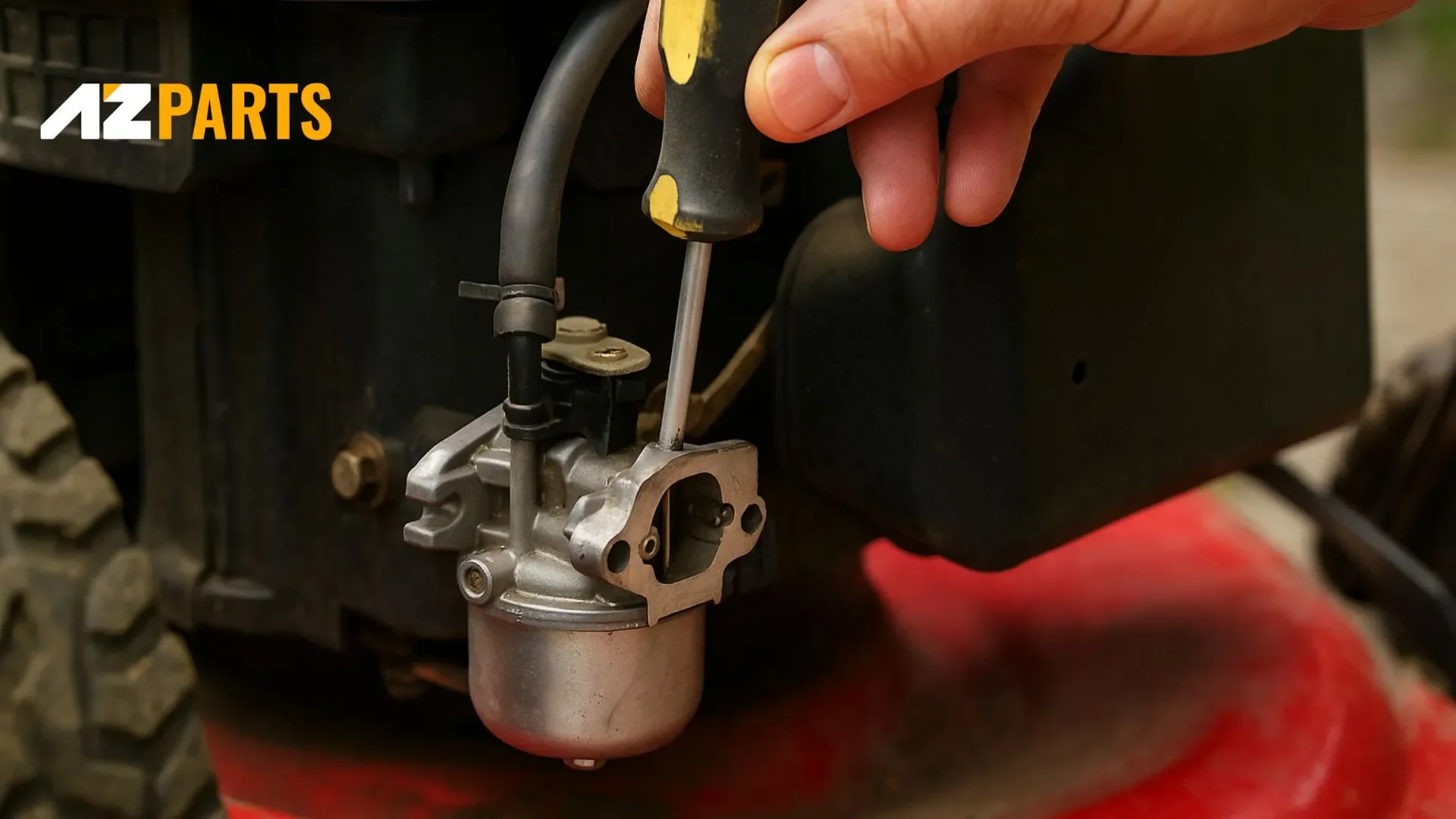
Final Tip:
After performing any of the steps above, run your lawn mower for 5–10 minutes to observe changes in behavior. Regular maintenance, including seasonal tune-ups, helps prevent rough performance and extends the life of your mower.
After performing any of the steps above, run your lawn mower for 5–10 minutes to observe changes in behavior. Regular maintenance, including seasonal tune-ups, helps prevent rough performance and extends the life of your mower.
When your lawn mower runs rough, simple maintenance steps like cleaning the air filter, replacing old fuel, or checking the spark plug can make a big difference. With the right parts and tools, most fixes are easy to handle at home. AZParts provides the quality lawn mower parts you need to get your mower running smoothly again.
Learn more about other lawn mower repair tips you can try at home:
Contact Info
Address: 8 The Green, Ste A, Dover, Delaware 19901-3618, United States
Email: support@azparts.com
Lawn Mower
Further Reading
Further Reading



